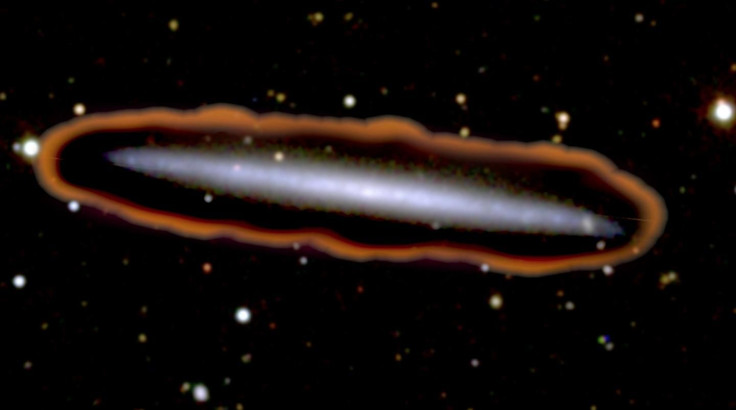Universe's Ultraviolet Background May Be Suppressing Formation Of Dwarf Galaxies

The universe, for some inexplicable reason, contains fewer small galaxies than computer simulations suggest it should. For instance, simulations predict that a galaxy like the Milky Way should have at least 10 times more satellite dwarf galaxies than it currently does — a discrepancy that’s known in cosmological circles as the dwarf galaxy problem.
An international team of researchers has now proposed a solution to this puzzle. The reason that there are very few small galaxies, they argue, is that the universe’s ultraviolet background strips smaller galaxies of the gas that forms stars.
Larger galaxies, on the other hand, can withstand this blast of radiation because they are protected by thick clouds of gas that enshroud them.
“Ultraviolet radiation heats the cosmic gas to temperatures higher than that of the surface of the Sun,” Tom Theuns, a physicist at Durham University in the U.K., and co-author of a study describing the researchers’ findings, said in a statement released Tuesday. “Such hot gas will not cool to make stars in small galaxies. This explains why there are so few small galaxies in the Universe, and also why our Milky Way has so few small satellite galaxies.”
For the purpose of their study, the researchers first mapped the ultraviolet background of the universe — taking into account, among other things, radiation produced by galaxies and quasars. When galaxy formation was simulated in the absence of this background UV radiation, many more small galaxies were seen bursting into existence.
“Massive stars and supermassive black holes produce huge amounts of ultraviolet radiation, and their combined radiation builds-up this ultraviolet background. This UV radiation excites the gas in the Universe, causing it to emit red light in a similar way that the gas inside a fluorescent bulb is excited to produce visible light,” study lead author Michele Fumagalli, also from Durham University, said in the statement. “Our research means we now have the ability to measure and map this UV radiation which will help us to further refine models of galaxy formation.”
The research could eventually help scientists not only understand why there are so few dwarf galaxies, but could also shed light on how all galaxies form and evolve.
© Copyright IBTimes 2025. All rights reserved.






















